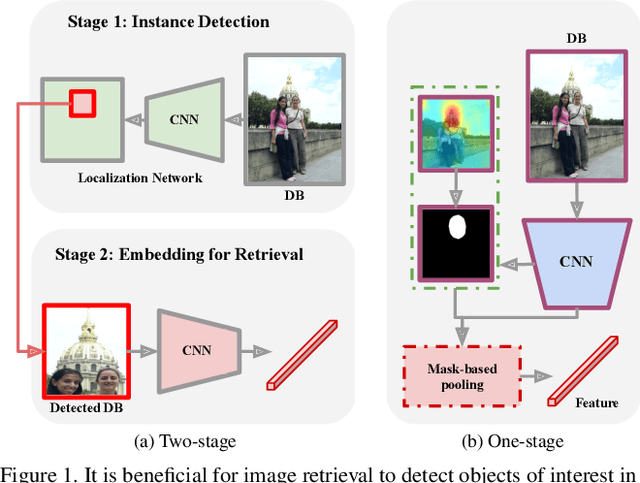Yeong Hyeon Gu
SyncMask: Synchronized Attentional Masking for Fashion-centric Vision-Language Pretraining
Apr 01, 2024



Abstract:Vision-language models (VLMs) have made significant strides in cross-modal understanding through large-scale paired datasets. However, in fashion domain, datasets often exhibit a disparity between the information conveyed in image and text. This issue stems from datasets containing multiple images of a single fashion item all paired with one text, leading to cases where some textual details are not visible in individual images. This mismatch, particularly when non-co-occurring elements are masked, undermines the training of conventional VLM objectives like Masked Language Modeling and Masked Image Modeling, thereby hindering the model's ability to accurately align fine-grained visual and textual features. Addressing this problem, we propose Synchronized attentional Masking (SyncMask), which generate masks that pinpoint the image patches and word tokens where the information co-occur in both image and text. This synchronization is accomplished by harnessing cross-attentional features obtained from a momentum model, ensuring a precise alignment between the two modalities. Additionally, we enhance grouped batch sampling with semi-hard negatives, effectively mitigating false negative issues in Image-Text Matching and Image-Text Contrastive learning objectives within fashion datasets. Our experiments demonstrate the effectiveness of the proposed approach, outperforming existing methods in three downstream tasks.
On Train-Test Class Overlap and Detection for Image Retrieval
Apr 01, 2024



Abstract:How important is it for training and evaluation sets to not have class overlap in image retrieval? We revisit Google Landmarks v2 clean, the most popular training set, by identifying and removing class overlap with Revisited Oxford and Paris [34], the most popular evaluation set. By comparing the original and the new RGLDv2-clean on a benchmark of reproduced state-of-the-art methods, our findings are striking. Not only is there a dramatic drop in performance, but it is inconsistent across methods, changing the ranking.What does it take to focus on objects or interest and ignore background clutter when indexing? Do we need to train an object detector and the representation separately? Do we need location supervision? We introduce Single-stage Detect-to-Retrieve (CiDeR), an end-to-end, single-stage pipeline to detect objects of interest and extract a global image representation. We outperform previous state-of-the-art on both existing training sets and the new RGLDv2-clean. Our dataset is available at https://github.com/dealicious-inc/RGLDv2-clean.
Conditional Cross Attention Network for Multi-Space Embedding without Entanglement in Only a SINGLE Network
Jul 25, 2023



Abstract:Many studies in vision tasks have aimed to create effective embedding spaces for single-label object prediction within an image. However, in reality, most objects possess multiple specific attributes, such as shape, color, and length, with each attribute composed of various classes. To apply models in real-world scenarios, it is essential to be able to distinguish between the granular components of an object. Conventional approaches to embedding multiple specific attributes into a single network often result in entanglement, where fine-grained features of each attribute cannot be identified separately. To address this problem, we propose a Conditional Cross-Attention Network that induces disentangled multi-space embeddings for various specific attributes with only a single backbone. Firstly, we employ a cross-attention mechanism to fuse and switch the information of conditions (specific attributes), and we demonstrate its effectiveness through a diverse visualization example. Secondly, we leverage the vision transformer for the first time to a fine-grained image retrieval task and present a simple yet effective framework compared to existing methods. Unlike previous studies where performance varied depending on the benchmark dataset, our proposed method achieved consistent state-of-the-art performance on the FashionAI, DARN, DeepFashion, and Zappos50K benchmark datasets.
 Add to Chrome
Add to Chrome Add to Firefox
Add to Firefox Add to Edge
Add to Edge